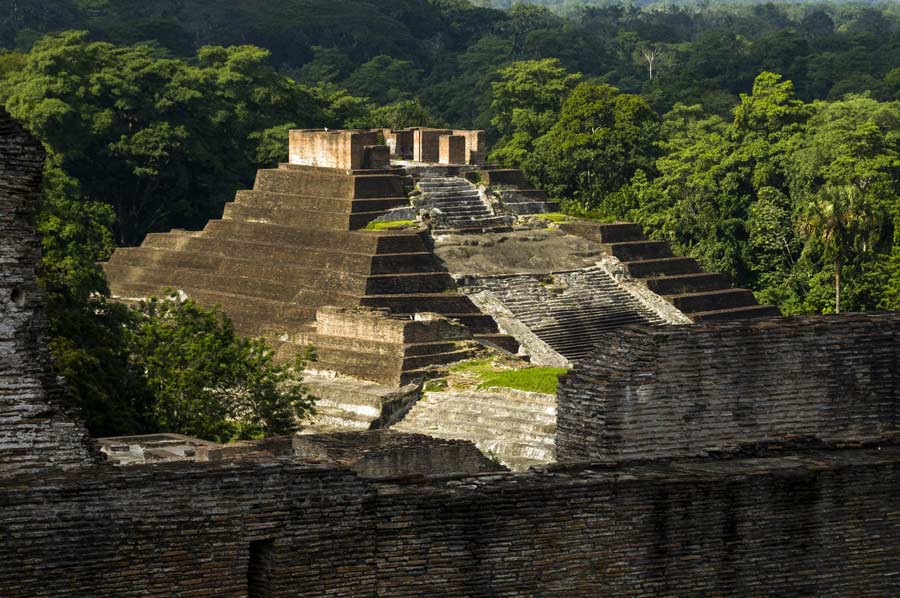Mexico’s 'Tren Maya' Project Reveals Countless New Sites and Burials
Mexican President Andres Manuel Lopez Obrador’s ambitious, and highly controversial, Maya Train or Tren Maya project was announced in the winter of 2018. Envisaged as an intercity project that will traverse the Yucatan Peninsula in south-eastern Mexico, it was met with opposition by historical conservationists, the Zapatista guerrilla group, local indigenous peoples, and a significant proportion of Mexican citizens. This is because the peninsula is home to an enormous number of ancient Maya civilization sites. This was confirmed recently when almost 2,500 pre-Hispanic structures, and 80 burial sites were found along one part of the controversial Tren Maya route, reports Vallarta Daily.

One of the ancient Maya burials found near a section of the Tren Maya high-speed rail project in Mexico. (INAH)
The Tren Maya Site 1 Artifact and Burial Finds
The Tren Maya train project is viewed as a colossal environmental sore, particularly because the 1,500-kilometer (950-mile) project will rely on diesel-electric trains that run through the heart of Central America’s historic Yucatan jungles. Mexico’s Natural Institute of Anthropology and History (INAH) has not yet confirmed whether the construction of this project has damaged or destroyed these sites, which in some places run parallel alongside the train tracks, as per a INAH statement released late last week. The high-speed Tren Maya rail project was largely conceived as a better way to connect Mexico’s Yucatan beach resorts to the peninsula’s interior regions and jungles.
Apart from the burial sites, hundreds of ceramic finds (30 complete vessels, and 60,000 odd fragments so far), mounds and bases with complex architectural structures, were identified using GPS georeferencing, topographic satellite images and LiDAR (Light Detection and Ranging) on the periphery of one of the sections of the project that connects the city of Palenque, in Chiapas, to Escarcega in Campeche, reports CNN.
- Hidden in the Glyphs: Deciphering Bilingual Mayan-Olmec Text
- Oldest And Largest Pre-Maya Sacred Site Discovered In Mexico

3D image of remains and grave goods found in Section 1 of the Maya Train shed light on the pre-Hispanic occupation of Tenosique, Tabasco. (INAH)
"Both the immovable archaeological artifacts and the movable ones expand the knowledge about daily life, and trade and cultural exchange relations that existed centuries ago in the Mayan area," the researchers said. INAH archaeologists Ileana Echauri Pérez and Iliana Ancona Aragón worked with INAH investigator Silvianne Boucher Le Landais on this project, and together they have provided some fascinating insights into these recent historical finds.
Some items of special interest attracted particular attention, including "an offering composed of a bowl and a spout vessel, both with four mammiform supports - representing the breasts of a woman," which dates from the transition from the Pre-Classic to the Classic period (known as Protoclassic or the Terminal Pre-Classic; 100 BC – 300 AD), when many Maya centers entered a period of decline.
The bowl and spout vessel is believed to have been employed by the ruling elite during important political or religious moments, with precious liquids like chocolate or perfume stored in it. Incidentally, preliminary analysis has indicated that the Mayans inhabited this region between 700 BC and 850 AD. The material culture indicates the presence of humans in the area from the early Preclassic period onward, and these vessels were likely also used for luxury events and even in daily life.
- Palenque – The Splendor of a Great Maya Metropolis
- Ritual Mask of Legendary 7th century Maya King Pakal the Great has been unearthed in Mexico

Mask representing Itzamnaaj, Maya god of the sky, located in Temple VI, in the archaeological zone of Comalcalco, Tabasco, Mexico. (Alfonsobouchot / CC BY-SA 4.0)
Discoveries at the Second Tren Maya Site of Panjale
The researchers are trying to have a positive view of the potentially destructive Tren Maya project. They see it as an opportunity to uncover more Maya history. "The construction of the Mayan Train constitutes an important research opportunity, through archaeological recovery, with a view to expanding the knowledge about the archaeological sites of the regions that the train will travel through," the researchers stated.
This is especially true of the Tabasco Panjale site, where the archaeologists have turned their attention to the area of Boca del Cerro, located on the bank of the Usumacinta River that runs through south-eastern Mexico, and north-western Guatemala. This area is associated with a large residential area at the site known as Panjale, which was on a central trade route connecting various regions in Mesoamerica.
This area was occupied since the Late Preclassic period, with significant occupation in the Early Classic and peaking during the Late Classic and the Terminal Classic (850 AD – 1100 AD), right up to the Postclassic periods (1100-1450 AD).
At the Panjale site, 8,000 ceramic fragments, and 14 complete vessels have been classified along with five new monuments. The layers of the site indicate seven different construction periods that can be distinctly identified. Fine-paste ceramics, especially orange-colored pieces, were widely distributed at sites in the Usumacinta basin, linking Mexico with Guatemala.
Top Image: Mexico's Tabasco province Comalcalco Pyramid is located near the Panjale site, near a section of the Tren Maya high-speed rail project. Source: Eduardo / Adobe Stock
By Sahir Pandey
References
Associated Press. 2021. Thousands of archaeological sites found on Mexico’s Mayan Train Route. Available at: https://www.vallartadaily.com/thousands-of-archaeological-sites-found-on-mexicos-mayan-train-route/
Gigova, R. 2021. Hundreds of Mayan artifacts discovered along train construction route in Mexico. Available at: https://edition.cnn.com/style/article/mayan-civilization-artifacts-discovery-train-mexico-scn-scli-intl/index.html
INAH. 2021. Archaeological salvages in Section 1 of the Mayan Train shed light on the pre-Hispanic occupation of Tenosique, Tabasco. Available at: https://www.inah.gob.mx/boletines/10512-salvamentos-arqueologicos-en-tramo-1-del-tren-maya-brindan-luz-sobre-la-ocupacion-prehispanica-de-tenosique-tabasco



















